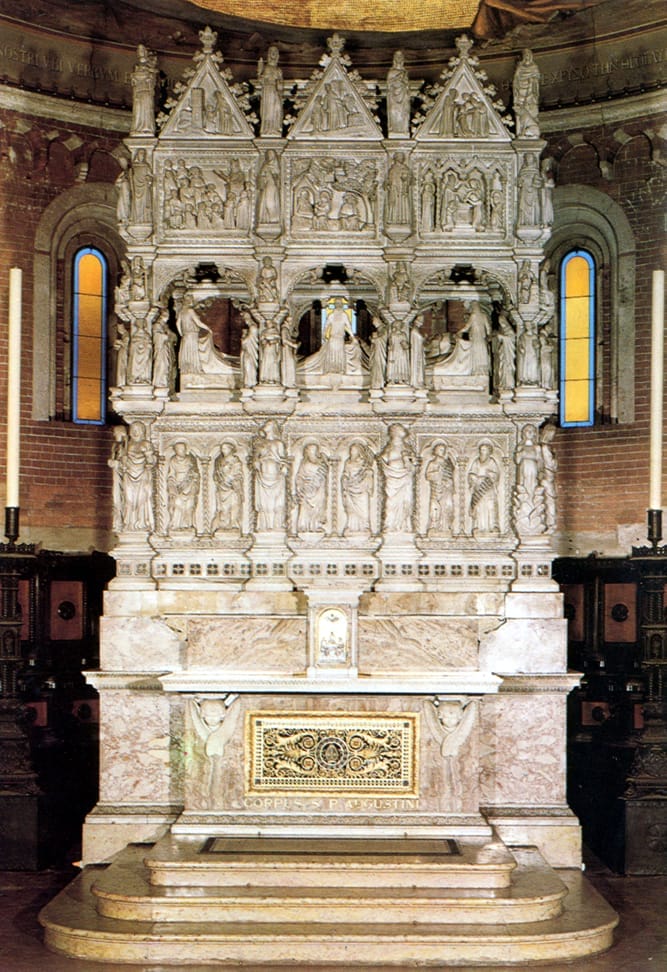This year, the feast of St. Augustine is being celebrated with a special importance upon reaching the 650 years of the construction of its monumental sepulcher, which is being conserved in the Church of San Pietro in Ciel d’Oro, in Pavia, at the northern part of Italy.
Posthumous pilgrimage
Although the holy Doctor died in Hippo, the actual Annaba (Argelia) in the year 430, his remains travelled through different places in the course of the centuries. At the beginning of the VI centuries the African bishops were exiled from their Seas by the vandal king Trasamundo. They left carrying with them the most precious treasure of the African Church, the remains of Augustine. They deposited them in the island of Cerdeña (Italy), in the Church of St. Saturnino of Cagliari, where they would remain for more that two and a quarter centuries.
Around the year 722 there was the new transfer of the venerable relics. The motive was, this time, the coming of the Mussulman, who were moving towards the island. The longobandian king Luitprando succeeded to save them by paying for them a great amount of money. The remains were solemnly transferred to the capital of the kingdom, Pavia, and were deposited in San Pietro in Ciel d’Oro within a silver coffin, which is still being conserved today.
The mausoleum
In the crypt of this Church, together with the remains of a Christian philosopher Severino Boecio, there rest the bones of St. Augustine until, in the middle of the XIV century, the Augustinians wanted to construct a mausoleum of outstanding beauty that would be situated at the noble side of the Church. The work lasted not less than 20 years (1360-1380), but the only sure date is that of 1362, which is being engraved on the marble. Now it reaches 650 years.
That which is known as “the ark of St. Augustine”, which contains his body, appears to be an epitome of the faith and life of the Doctor of Grace. It has the dimension of 3,95 meters high, 3,07 width and 1,68 depth, all made out of white marble from Carrara. This enormous surface is made with great extravagance: a total of 50 figures, 95 statues, -not counting the animals- and 420 heads of angels and saints.
Center of devotion
The City of Pavia is situated in the route that connects Rome the central Europe and the northern part. For this reason the sepulcher of St. Augustine has been a center of pilgrimage in the course of the centuries. And it continues to be even up to these days. Among the thousands of pilgrims who have come to seek the intercession of the Saint of Hippo, are worth mentioning the last popes: Paul VI prayed before the remains of the Saint in 1960, John Paul II visited the tomb in 1984 and Benedict XVI made his own during his first Italian trip in the year 2007.


